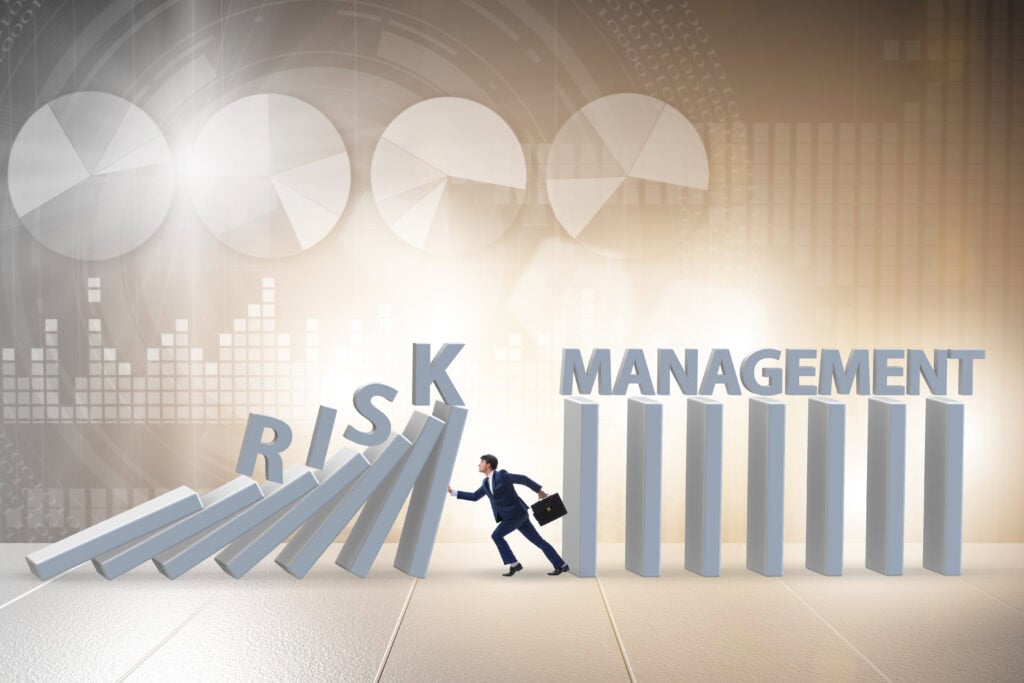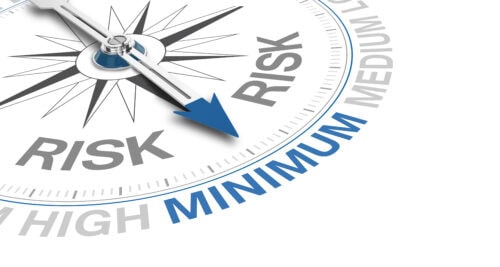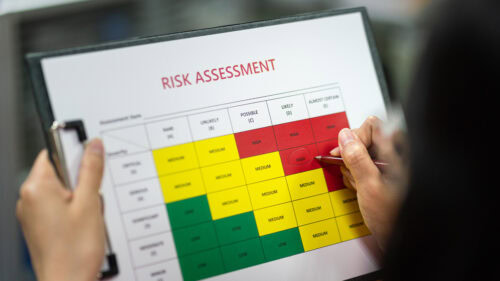Logistics Risk Management: What It Is, Types, and Implementation

Unexpected events can derail even the most efficient logistics network, making risk management in logistics essential. From natural disasters to supplier delays, risks pop up without warning. That’s why logistics risk management is no longer optional—it’s essential.
Companies today face supply chain disruptions that can impact everything from raw materials to customer satisfaction. Identifying potential risks early and building a solid risk management process helps keep logistics operations running smoothly.
By embedding risk assessment into daily decision-making, businesses can mitigate risks, reduce financial losses, and boost resilience. Strong risk management strategies are critical for protecting a company’s supply chain and bottom line.
Introduction to Logistics Risk
Logistics risk management is a critical component of any business that involves the transportation of goods. It encompasses the identification, assessment, and mitigation of potential risks that could disrupt the supply chain, ensuring business continuity and minimizing losses. Effective logistics risk management involves a comprehensive approach that considers various factors, including natural disasters, supplier insolvency, and cyberattacks. By prioritizing risks and developing mitigation strategies, companies can reduce the likelihood and impact of supply chain disruptions, ultimately protecting their reputation and bottom line.
Understanding Modern Supply Chain Risks
Supply chains now stretch across borders, systems, and partners. That makes them vulnerable at every step. A single weak link can disrupt the entire supply chain and hurt business operations fast, making it crucial to identify weak points early.
Delayed shipments, supplier issues, or port shutdowns cause ripple effects that damage customer satisfaction and cut into profits. Strong supply chain risk management means spotting weak spots before they break.
A comprehensive risk assessment helps teams pinpoint potential risks, especially as logistics and supply chain networks grow more complex. Smart companies embed risk identification and continuous monitoring into daily workflows to stay ahead of problems.
Types of Logistics Risk Management
Logistics risk management involves multiple risk types, each with a serious business impact. Here are the key types:
- Operational Risks: Breakdowns in systems, warehouse delays, or transport issues slow down deliveries and increase costs. Transportation risks, such as accidents or delays, can significantly impact delivery schedules and increase operational costs. These risks often result from poor process control, outdated tools, or untrained staff handling logistics functions.
- Financial Risks: Unexpected changes in fuel prices, currency rates, or tariffs impact margins. These risks affect budgeting, purchasing, and long-term planning, especially when dealing with international trade or volatile global markets.
- Strategic Risks: Poor planning, weak demand forecasting, or supplier dependency causes stockouts or overstocking. These missteps hurt customer satisfaction and tie up capital, weakening the company’s long-term market position.
- Environmental Risks: Natural disasters like floods, storms, or wildfires can stop shipments and damage goods. Without a backup plan, these events disrupt the entire supply chain and hurt recovery timelines.
For example, a European electronics distributor lost $2.5 million due to supply chain disruptions during a port strike. No backup routes meant lost sales and damaged relationships. Without a clear risk management framework, recovery took months.
Supply Chain Disruptions and Their Impact
Internal risk factors such as outdated systems or poor planning often slow down logistics operations, leading to supply chain disruption. In contrast, external risks like natural disasters, geopolitical risks, and strikes can shut down trade routes or stop production processes.
Even a small software failure can disrupt inventory management and delay orders. These disruptions cost money, damage the company’s reputation, and break trust with clients. Fast risk mitigation strategies and flexible operations are key to maintaining business continuity when these events occur.
Core Risk Management Strategies
Effective risk management strategies combine prevention, preparation, and response, forming comprehensive risk management strategies. Teams identify and rank potential threats, create response plans, and build systems that adapt. Matching the right strategy to the right risk helps maintain control over supply chain operations.
Risk Assessment in Logistics
A strong risk assessment process starts with risk identification. Teams must track market trends, check reporting mechanisms, and study past failures. Tracking key risk indicators (KRIs) helps teams monitor potential risks and take proactive measures.
- Qualitative Assessments: Experts use industry experience, interviews, and scenario planning to gauge the likelihood and impact of risks. This method helps understand risk scenarios when hard data is unavailable or incomplete.
- Quantitative Assessments: Data-driven tools like scoring systems and predictive analytics measure risk probability and impact. These models offer a clear picture using historical data, supplier metrics, and operational KPIs.
For instance, one U.S. food supplier used weather data to forecast hurricane disruptions and reroute deliveries in advance. That avoided spoilage and ensured customer satisfaction.
Prioritizing Risks
Prioritizing risks is a crucial step in logistics risk management. It involves evaluating potential risks based on their likelihood and potential impact on the supply chain. Companies can use various tools and techniques, such as risk assessments and SWOT analysis, to identify and prioritize risks. By focusing on the most critical risks, companies can allocate resources effectively and develop targeted mitigation strategies. For instance, a company may prioritize risks related to transportation, such as accidents or delays, over risks related to supplier insolvency. By doing so, the company can develop strategies to mitigate these risks, such as investing in fleet management systems or diversifying its supplier base.
Risk Mitigation Approaches
Effective mitigation requires speed, flexibility, and preparation. Smart moves today prevent bigger problems tomorrow across the logistics and supply chain network.
- Diversifying Suppliers: Working with multiple vendors spreads risk. When one fails, others can continue to supply. This approach lowers dependency and protects against shutdowns caused by external factors or localized disruptions.
- Software Solutions: Advanced platforms improve visibility and speed. Features like real-time alerts, inventory tracking, and automated reports allow teams to react fast and mitigate risks before they escalate or cause downtime. Advanced platforms also enhance supply chain security by providing real-time alerts and monitoring for potential threats.
- Third Party Vendors: Backup contracts ensure continuity when primary suppliers fall short. These partnerships provide fast alternatives, helping teams avoid shortages, shipping delays, or stalled production in critical supply chain operations.
A major carmaker, facing a chip shortage, adopted dual-sourcing as a risk mitigation strategy. That decision cut future delays by 40%, showing how good planning can significantly enhance resilience.
Implementing Risk Management Processes
Integrating a proactive approach into daily work helps ensure smooth operations. Leaders must design workflows that fit the business and update them regularly.
A structured system helps teams handle logistics risks in real time and reduce fallout. Follow these steps to understand the overall risk management processes implementation:
Technology Solutions
Modern tools simplify how teams manage risk. Smart software solutions track supplier performance, delivery timelines, and external factors like weather or political unrest. Real-time dashboards show where delays happen, while alerts flag potential disruptions early.
Real-time dashboards and alerts facilitate informed decision making, enabling teams to respond quickly to potential disruptions.
Scenario simulations help teams test plans before issues strike. These features improve risk by enabling faster decisions. Seamless integration with supply chain management platforms ensures all departments stay aligned.
Automation eliminates guesswork, cuts delays, and boosts efficiency. Strong tools don’t just track risk—they help mitigate risks across increasingly complex supply chain operations.
Creating Risk Management Protocols
Clear operational procedures turn planning into action. Teams need step-by-step instructions to follow during risk scenarios, so decisions stay fast and focused. Each protocol must assign responsibilities, define escalation paths, and include contact points.
Tools like shared dashboards and messaging systems improve effective communication across shifts and regions. Quarterly drills train teams to react fast to unforeseen events, cutting downtime. Templates and checklists also prevent confusion.
A strong protocol supports a risk-aware culture, helping teams stick to the plan, stay calm, and protect business operations under pressure.
Vendor Relationships
Vendor relationships play a critical role in logistics risk management. Companies must carefully select and manage their vendors to minimize the risk of supply chain disruptions. This involves conducting thorough risk assessments, monitoring vendor performance, and developing contingency plans in case of vendor failure. By building strong relationships with vendors, companies can ensure that they are aware of potential risks and can work together to mitigate them. For example, a company may work with its vendors to develop a joint risk management plan, which outlines procedures for managing risks and responding to disruptions.
Safety Protocols
Safety protocols are essential in logistics risk management. Companies must develop and implement safety protocols to protect their
Supply Chain Resilience
Strong risk management strengthens every link in global supply chains. Companies that build resilience can respond quickly to potential disruptions, adjust their plans, and protect business continuity. High-resilience operations depend on backup suppliers, flexible routing, and quick decision-making.
Effective teams align their supply chain operations with real-time data and predictive tools. That level of control helps avoid breakdowns and meet customer expectations during tough times. Success starts with proactive planning and ends with agile execution.
Natural Disasters and Emergency Planning
Floods, earthquakes, and storms can shut down transport routes and damage inventory, making contingency planning essential. Companies must prepare detailed response plans for each type of emergency. Here are the potential considerations:
- Evacuation Routes for Warehouses: Pre-planned escape routes ensure employee safety during natural disasters. Regular drills, signage, and local coordination help warehouse teams act quickly without confusion, minimizing injuries and property damage during emergencies.
- Real-Time Alerts for Drivers: GPS-based alerts and mobile updates inform drivers of blocked roads or hazards. Quick rerouting reduces delays, protects vehicles, and ensures deliveries continue despite changing conditions on the ground.
- Backup Suppliers for Procurement Teams: Alternate sourcing arrangements keep operations running if primary suppliers go offline. Contracts and verified relationships help fill urgent gaps and protect supply chain operations during unexpected disasters.
- Inventory Relocation Plans: High-risk zones require flexible inventory strategies. Moving goods to safer warehouses ahead of predicted disasters reduces loss, protects stock value, and helps maintain business continuity when local access becomes restricted.
- Emergency Communication Channels: Pre-set communication lines connect all departments during crises. Phone trees, group messaging apps, and emergency contact sheets allow faster coordination, reduce confusion, and support immediate decision-making under pressure.
Emergency drills and automated alert systems help reduce chaos. Firms with structured plans recovered 50% faster after recent geopolitical risks and climate events. Planning isn’t optional—it protects people, assets, and the company’s supply chain operations.
Continuous Improvement
Risk never stays the same. Smart organizations review strategies often, especially after failures or near misses. Teams must track performance through key performance indicators like delivery times, damage rates, and incident responses.
Maintaining detailed records of risk management activities helps teams refine their strategies over time. Regular audits and feedback loops keep the risk management plan updated. Teams should revisit risk scenarios, test assumptions, and update based on new external factors. Improvements can’t wait until the next crisis—they must happen after every one.
Measuring Success
Good logistics risk management delivers results you can measure through performance metrics. Use metrics like delivery success rate, response time to disruptions, and supplier reliability. Monitor near misses, not just major failures. Strong programs lead to better cost control and improved financial stability.
Success means fewer emergencies, faster recovery, and better alignment across departments. Data-backed tracking proves what’s working and where to improve. Use dashboards, logs, and shared reports to drive accountability and visibility.
Building a Risk-Ready Organization
Prepared teams respond faster and make fewer mistakes. Every employee must know how logistics risks impact their daily work and align with overall business objectives. Leaders should promote a risk-aware culture through clear training, open communication, and real examples.
Regular meetings between departments help track trends, update response plans, and develop strategies for new threats. Encouraging shared responsibility improves decision-making and builds trust. Risk readiness comes from habits, not paperwork.
Quick thinking, real-time tools, and strong collaboration help organizations stay prepared and protect the company’s supply chain during unexpected events.
FAQs
What are the 7 R’s of logistics management?
Right product, Right quantity, Right condition, Right place, Right time, Right customer, and Right cost. These guide decisions across the supply chain and support better risk management. Missing any one of them increases potential pitfalls and weakens reliability.
What are the 5 P’s of logistics?
Product, Place, Price, Promotion, and People. Each P brings its own set of potential risks. Wrong pricing may cause margin loss. Weak staffing delays deliveries. Ignoring any factor breaks the system. Effective supply chain risk assessment considers all five to avoid blind spots.
What is the bullwhip effect in the supply chain?
Small demand changes at the retail level create bigger swings upstream. That causes overstocking, waste, and delays. Use predictive analytics, accurate forecasts, and clear data sharing to limit this risk. Smoothing the flow protects the entire supply chain from chaos.
What are the 4 A’s of sustainable logistics?
Awareness, Accessibility, Affordability, Availability. These help teams create eco-friendly, efficient systems that last. Each one ties back to risk management. Ignoring sustainability risks, long-term cost hikes, regulation issues, and supplier shortfalls. Balancing the 4 A’s builds a more resilient future.
What may lead to bad logistics?
Lack of planning, outdated systems, weak data, poor vendor choices, or slow responses. Warning signs include frequent delays, low fill rates, and poor customer reviews. Fix issues by prioritizing operational processes, upgrading tools, and reviewing strategies often. Stay alert to avoid failure.
Taking Action: Implementation Steps
Building strong logistics risk management starts with a clear plan. Follow these steps to create a process that protects your supply chain at every level:
- Map the Supply Chain: Visualize each part of the network to spot weak links. Look at suppliers, transport routes, and facilities to identify where potential risks exist and how they may impact operations.
- Conduct Risk Assessments: Use both internal audits and external data to evaluate threats. Combining insights helps uncover gaps that daily processes may miss, supporting a more comprehensive risk assessment approach across teams.
- Assign Risk Owners: Give specific team members ownership of key risk areas. Clear accountability speeds up response time, improves planning, and ensures no critical threats are overlooked during pressure situations.
- Build Tailored Protocols: Design step-by-step plans for the most likely threats. Custom protocols help teams act quickly, reduce confusion, and maintain business continuity when real-world problems disrupt normal operations.
- Use Software Tools: Real-time systems track shipments, flag issues, and enable faster decisions. These software solutions increase supply chain visibility, allowing managers to monitor operations in real-time and give managers the data they need to take immediate action when disruptions strike.
- Test and Improve Plans: Run drills, collect feedback, and update protocols often. Learning from near misses or failures helps teams refine responses and improve future performance in a structured, repeatable way.
New teams can begin with basic checks. Advanced teams must build full risk management systems linked to strategy, performance, and growth. Strong execution earns trust and creates a lasting competitive advantage.


